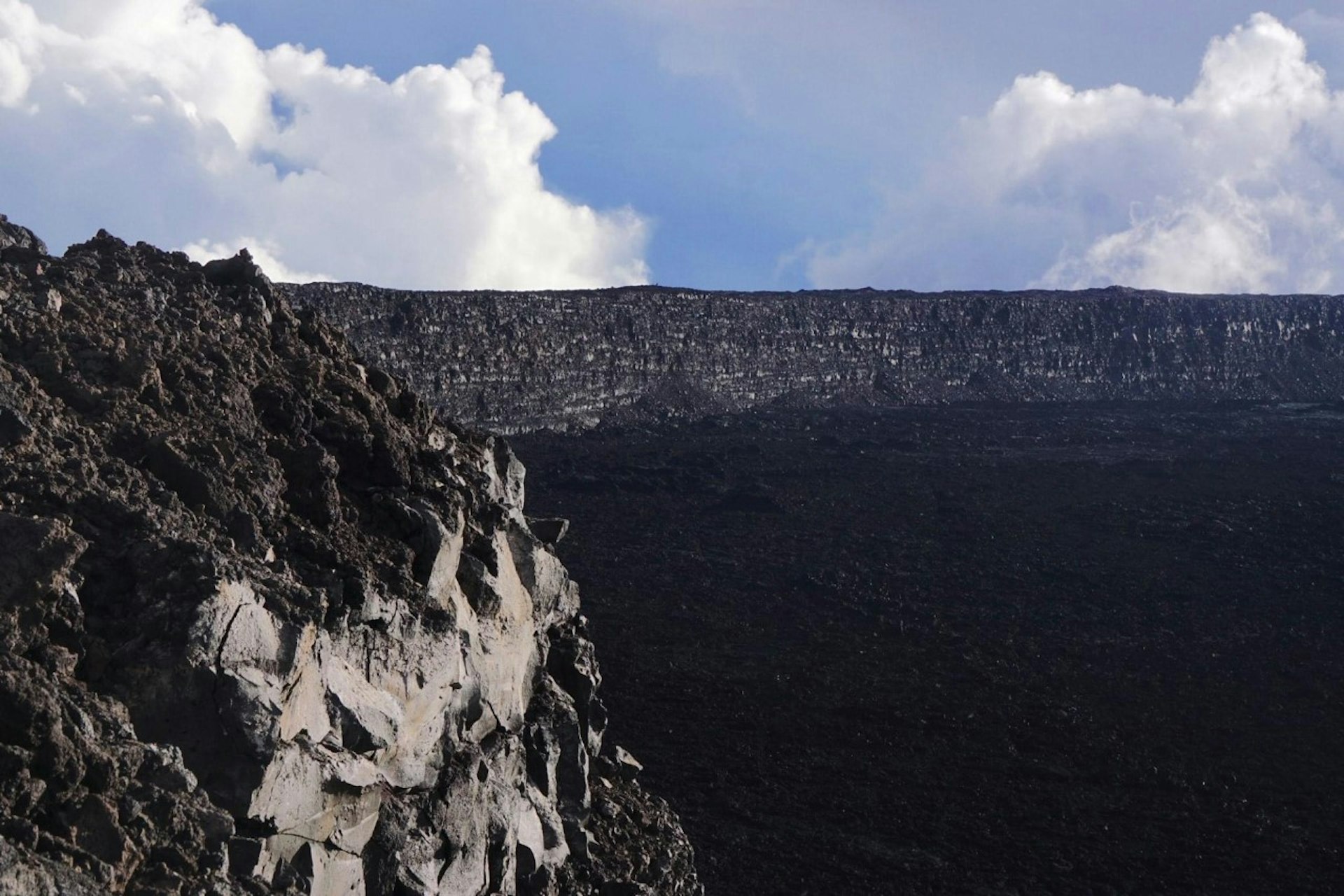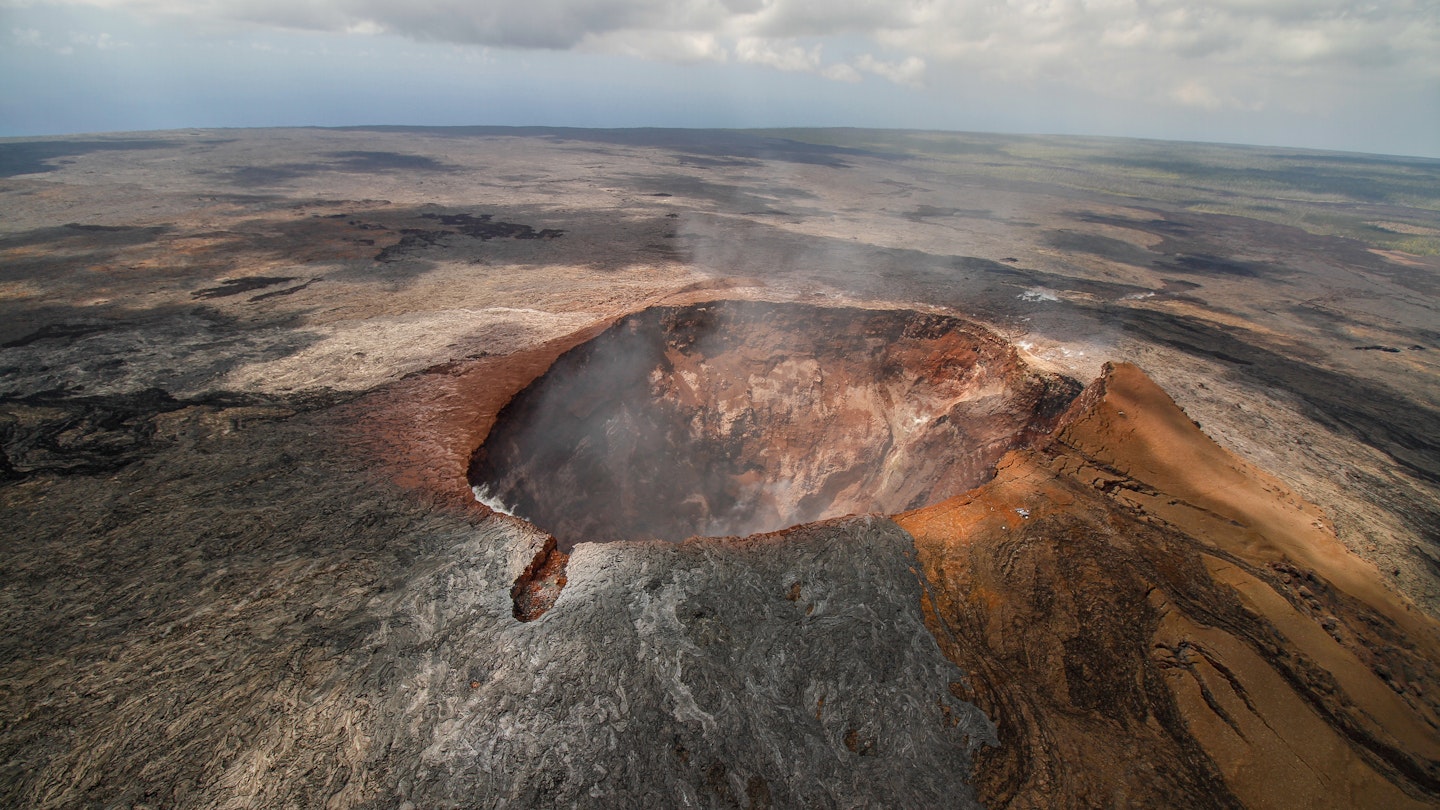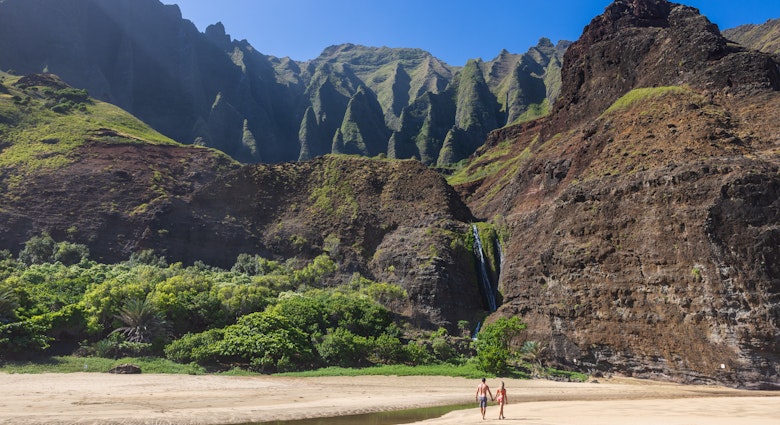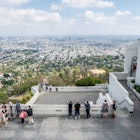Mauna Loa, on the Big Island of Hawai‘i, began spewing ash and debris into the air on Sunday, turning the sky red. Authorities said on Monday there could be more volcanic activity, prompting the State of Hawaii to raise the volcano-alert level to “warning.”
Mauna Loa has been belching ash and lava since 11:30pm local time on Sunday, according to the US Geological Survey (USGS) – the first time the volcano has erupted since 1984.
“At this time, lava flows are contained within the summit area and are not threatening downslope communities,” a notification from USGS said.

No evacuation orders are in place, and businesses and schools remain open; still, locals have been asked to prepare for the possibility of the lava flow changing direction. In response, the Red Cross has opened shelters on the island as a precaution.
On Monday morning, the Hawaiian Volcano Observatory upgraded the volcano alert level from “advisory” to “warning” and advised residents that volcanic gases, ash, and Pele’s Hair (thin fibers created by volcanic gas) may be carried their way. People with breathing difficulties are encouraged to stay indoors.
Could the eruption impact my travel plans?
Unlikely for now. The situation seems to have stabilized and the eruption could remain contained in an area where it’s easier to monitor. There is no immediate threat to people’s safety in local communities.
On Monday, the Hawaiian Volcano Observatory said that Mauna Loa’s eruption moved from the summit caldera to the northeast rift zone. This is an area where the terrain is flatter, which gives officials more time for preparation and early warning if the lava flow begins to move downhill toward neighborhoods. It takes the “threat away from the steepest slopes of the volcano where lava moves the fastest,” the HVO explains.
Regardless, locals and tourists visiting the area should review preparedness and refer to Hawaii County Civil Defense updates for further guidance, the HVO said.
“Based on past events, the early stages of a Mauna Loa rift zone eruption can be very dynamic, and the location and advance of lava flows can change rapidly,” the HVO said. “HVO is in close consultation with emergency management partners and will monitor the volcano closely to provide further updates on activity.”
#MaunaLoa is erupting from vents on the Northeast Rift zone. Flows are moving downslope to the north. USGS Photos from Civil Air Patrol fight. #MaunaLoaErupts @Volcanoes_NPS @Hawaii_EMA @CivilDefenseHI pic.twitter.com/kUYWYPdk4L
— USGS Volcanoes🌋 (@USGSVolcanoes) November 28, 2022
The Department of Transportation issued a travel advisory on Monday, asking passengers with flights to Hilo International Airport or the Ellison Onizuka Kona International Airport at Keahole to check with their airline prior to heading to the airport due to the volcanic activity at Mauna Loa.
If you’re on the ground, it’s worth noting that Hawai‘i Volcanoes National Park closed part of the summit to visitors last month as a precautionary measure because of recent earthquakes. Mauna Loa Rd and the 6662ft Mauna Loa Lookout remain open to the public.
Mauna Loa is the largest active volcano on the planet. Until Sunday’s eruption, the NPS said this had been Mauna Loa’s longest recorded quiet period. However, a string of earthquakes at its summit in recent months put scientists on high alert for eruption.
Volcanic eruptions in Hawaii are traditionally seen as “hō-ailona,” a sign or omen, and mark a time of change.












